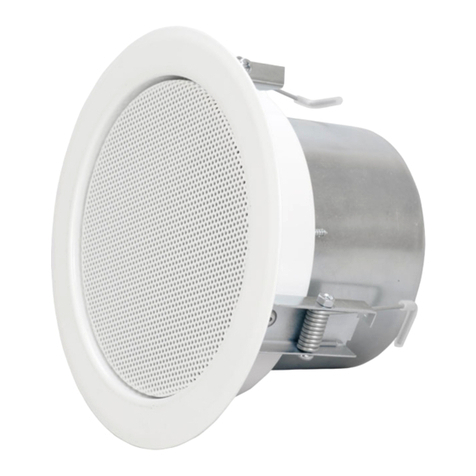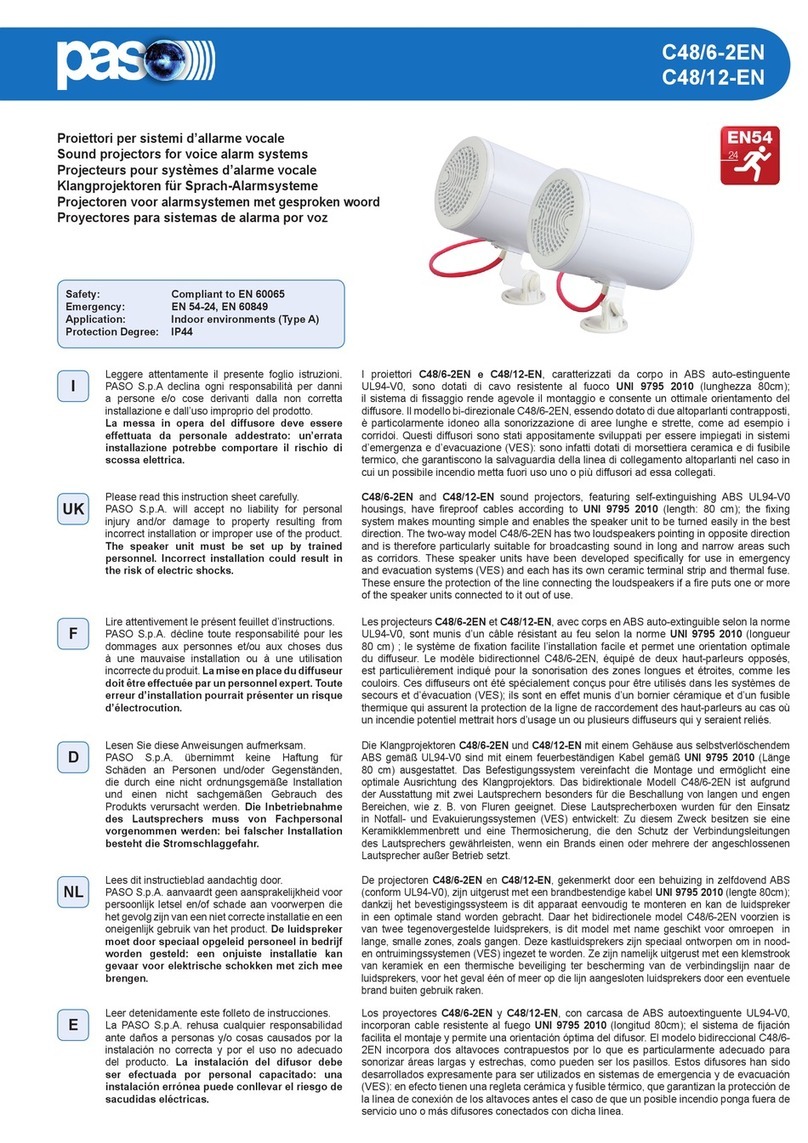
5
EN
PAW5500-VES
System manual PAW5500-VES Compact systems
2. INTRODUCTION
2.1 OVERVIEW OF THE SYSTEM
The new PAW5500-VES range incudes three integrated voice evacuation systems for emergency facilities, designed
specifi cally for wall-mounting and equipped with control units, certifi ed in compliance with EN 54-16:2008 / EN 54-4 standards.
Depending on the model, these systems are capable of managing from 2 to 6 alarm zones, each driven by a single amplifi er,
as well as remote microphone stations and controlled inputs to be connected to a central fi re-fi ghting system.
It is possible to connect up to a maximum of 6 of these systems to one other (for managing an overall maximum of 36 zones).
2.2 FUNCTIONAL FEATURES
•
Rated audio output: 500 W overall, distributable freely among the zones with a maximum limit of 250 W per single zone.
• Backlit 4.3” display with touch screen for selecting the alert and evacuation zones and enabling navigation for adjusting
volume levels, confi guring the equipment and viewing failures.
• Handheld fi reman’s paging microphone.
• Sending out of pre-recorded EVACUATION and ALERT messages.
• Sending out of pre-recorded BROADCAST messages (i.e. spots, announcements, sound bells).
• Playing back of pre-recorded messages via monitor loudspeaker.
• 7 off controlled input contacts, confi gurable for playing the evacuation and/or alert messages to the programmed zones or for
resetting the messages.
• 1 off music input for sound sources.
• 1 off auxiliary input confi gurable as a music source, a call with precedence activation or a call with automatic activation (VOX).
• 3 off confi gurable relay outputs.
• Double A+B output for each zone.
• Event log (list of failures and/or alarms that have occured in the system).
• Double LINK line for connecting other PAW5500-VES (up to a total of 6 units).
• Multilanguages management.
• Protected local button for placing the system in an emergency state, equipped with its own LED.
• Local reset button.
• 3-band equalisation for each zone output.
• 3-band equalisation for each music input.
• Optional internal expansion card ACPAW-2IN for two additional music inputs (EXT 1 and EXT 2).
• Optional internal expansion card ACPAW-6IN with DSP for six additional music inputs.
• Built-in SD/USB input for background music MP3 player.
• Independent selection on each zone of the various audio sources (MUSIC IN, AUX IN, MP3 player and EXT).
• Up to 8 pre-recorded messages can be retrieved from outside through input contacts (of which 2 fi xed emergency messages
- plus 6 that can be classed as emergency / evacuation / broadcast messages).
• Possibility of setting up to 16 timers for the programmed playing out of the broadcast messages with the possible activation of
signalling relays.
• Up to 16 PMB106-G and/or PMB112-G broadcasting microphone stations can be connected.
• Up to 4 of the above mentioned stations can be set for local calls only (zones of the card-cage to which they are connected).
• Up to 4 PMB132-V and PMB132/12-V remote emergency units can be connected (or, as an alternative, up to 2 touch screen
units TSB8500-V).
• EN54-4 certifi ed battery charge unit for 24VDC secondary power supply (batteries not included).
• Mounting on 19” rack (optional, with ACPAW-RCK accessory kit).






























